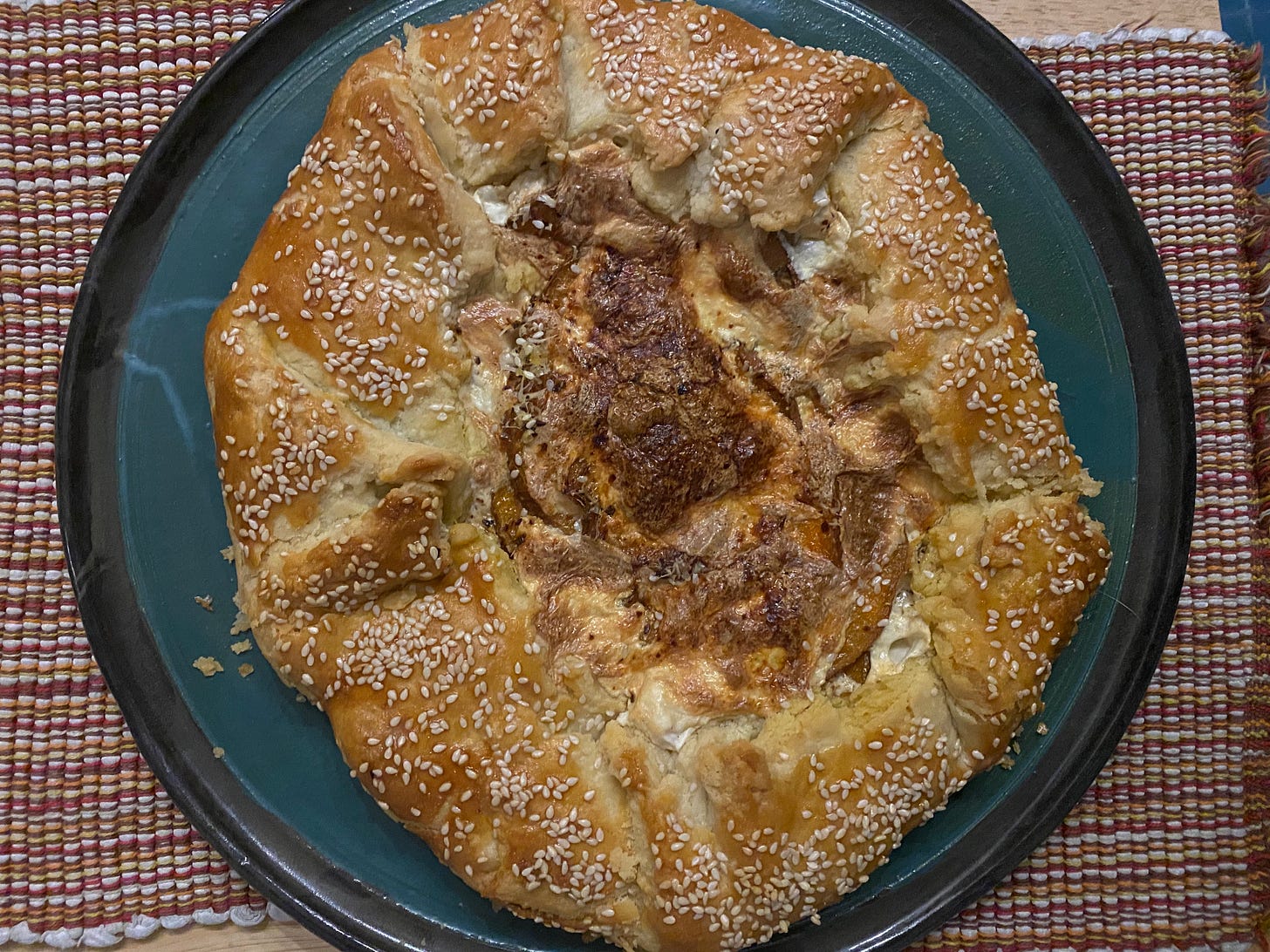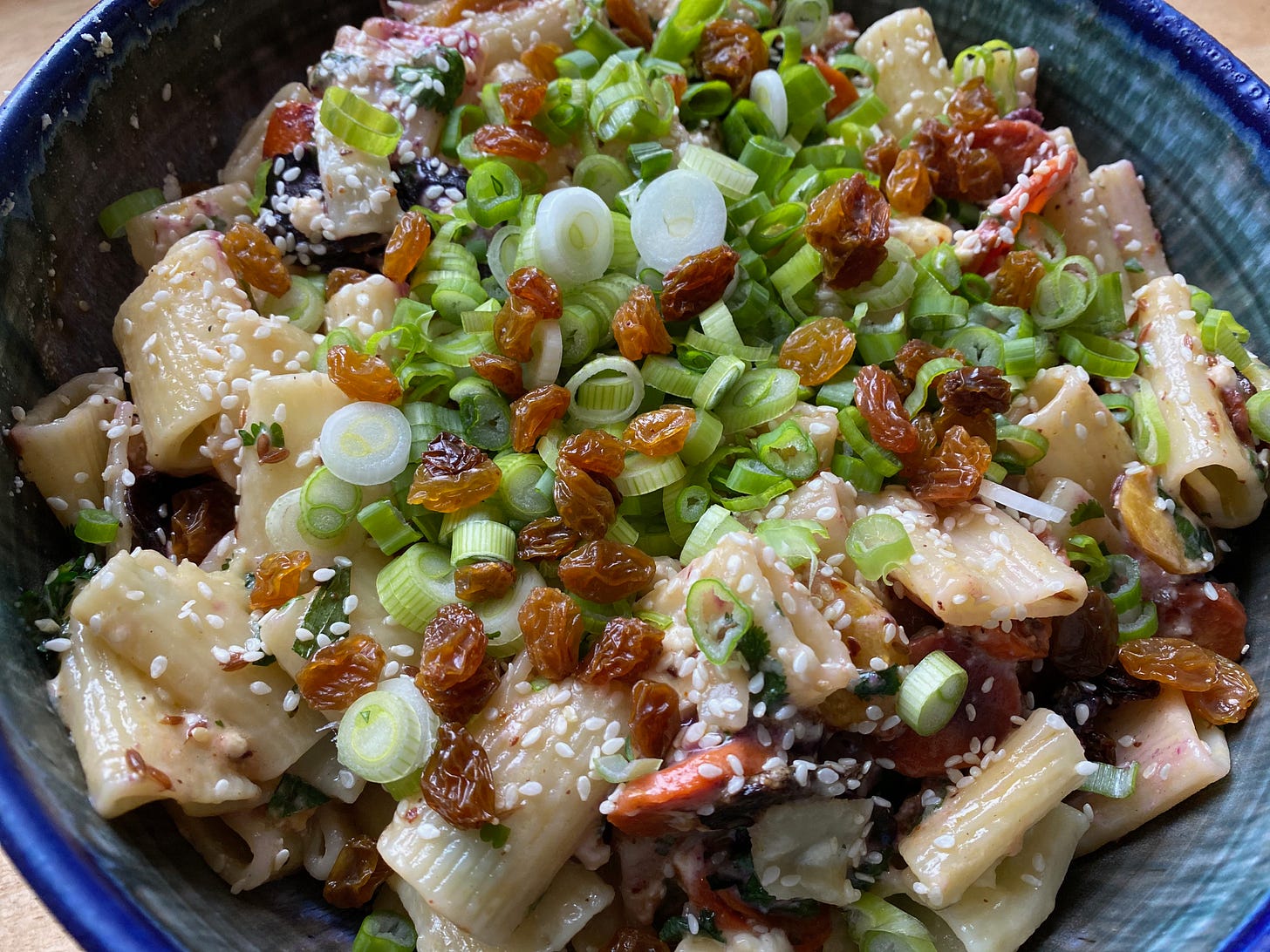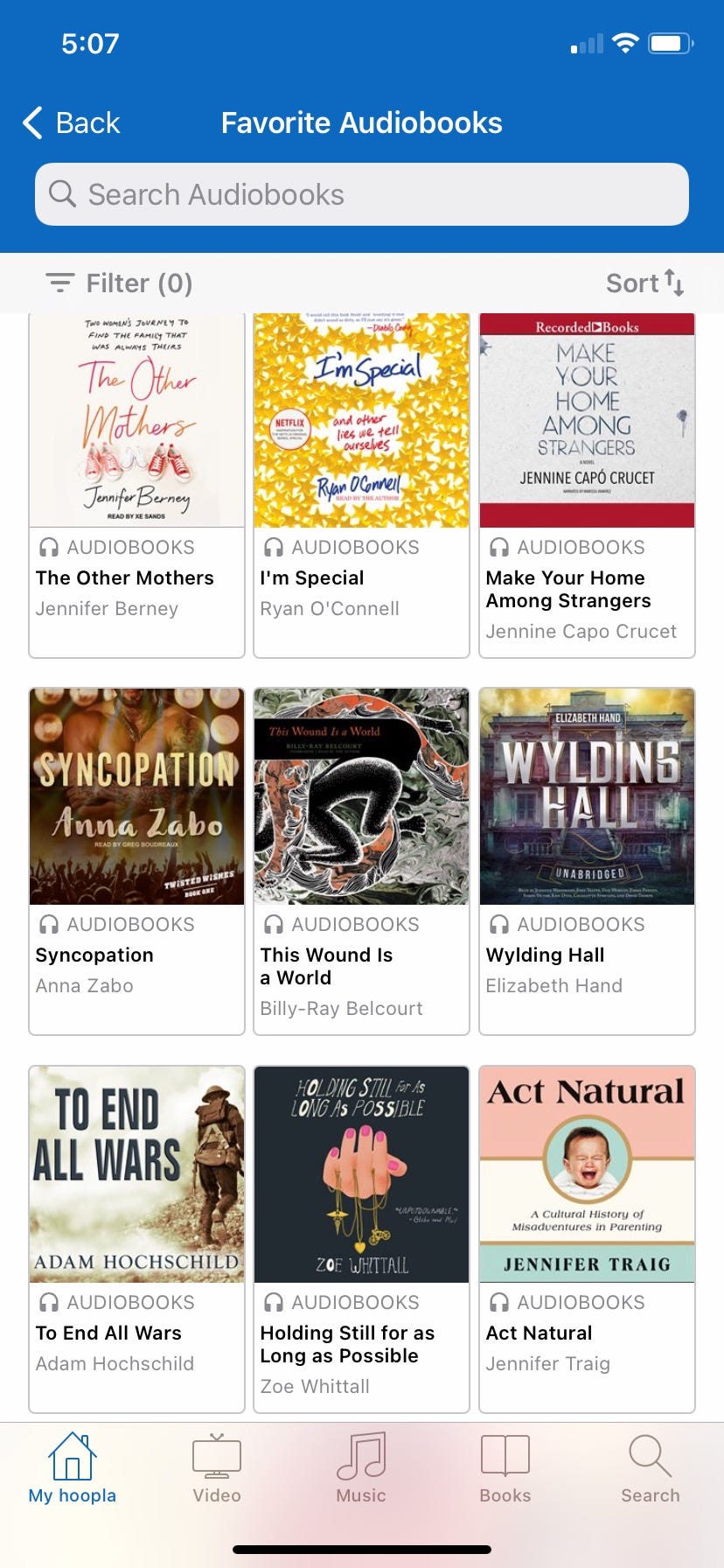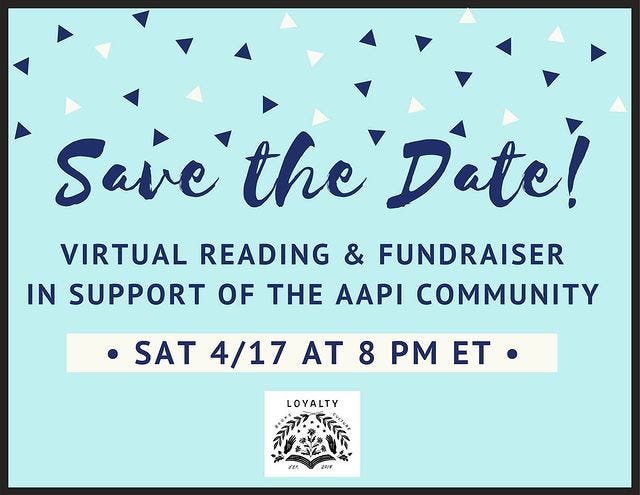Hello, bakers, readers, eaters, and friends! It’s been grey and rainy in my corner of Massachusetts this week and I am here for it. It’s also been a month since I launched this newsletter, and I want to thank you all for reading. Writing it brings me a lot of joy, and I hope it’s brought some delight into your life as well.
So: structural magic. I love a book that plays with form. I’m fascinated by the shapes books take. When I come across a book that messes with genre or employs an unusual structure, I get excited. I love the interplay between form and meaning, and I love discovering stories that feel unexpected because of how they’re built. These three books are as creative and innovative and surprising as they come, structurally. They also happen to be some of my very favorite reads of the year so far. I am so excited to tell you about them.
The Books

Backlist: Little Blue Encyclopedia (For Vivian) by Hazel Jane Plante (Fiction, 2019)
Get ready for some truly weird and wonderful structural magic: this novel is written in the form of a fictional encyclopedia. The narrator of the novel, and the writer of this encyclopedia, is a trans woman mourning the death of her best friend, Viv, also a trans woman. Viv was obsessed with a fictional TV show, Little Blue, which became a central part of their friendship. After Viv dies, her grieving friend decides to write this encyclopedia about Little Blue to keep her memories of Viv alive and find a way to live with her grief.
I can’t explain how powerful and enchanting this form is. Near the end of the book, our narrator writes:
“The joy of having known you is starting to paint over the pain of having lost you. And when I miss you most, I can absorb myself in something you adored. Suede. Little Blue.”
This book is full of that absorption, and it’s remarkable how deeply you get to know both Viv and the narrator through reading this encyclopedia. The show itself is strange and compelling—a small town drama set on a remote island. The complexity of this fictional world is incredible. As you read, you become totally invested in and intrigued by this detailed, intricate, made-up series. And not just the characters and settings in the show itself, but the fandom surrounding it, its history, and most importantly, the role it played in the lives of Viv and the narrator.
It’s such an honest and poignant way to write about grief. It’s so apparent that writing about Little Blue is the only way our narrator knows how to live in the wake of Viv’s death. It gives the whole story this breathtaking intimacy. The narrative has a spellbinding force even though it’s a character-driven book.
The whole book is an ode to trans friendship. Viv was straight and our narrator is queer; it’s clear she was in love with Viv. But this is not a sad story about unrequited love. It's about the importance of friendship in all of its messiness, even if it isn’t always pretty or easy. The narrator captures all the tiny details that make up a friendship and the pain of losing them:
“If you spend hundreds of hours with someone, you have a catalogue of tiny memories. As you live your life, those tiny memoires snap and crackle your synapses. It can be overwhelming, like the world is already overlaid with experience. When I was picking up a lightbulb in the drugstore today, I was reminded of being in the exact same store with Viv while she filled a basket with twenty or thirty items.”
She goes on to describe doing errands with Viv. The book is filled with scenes like this: moments that trigger memories, a fluid movement between the past and the present, all of it adding up to this complicated, nuanced portrait of a person and a friendship. By end of the book, I felt so close to Viv. I could picture her lounging in her apartment, recall a thousand mundane conversations she had, recite her opinions about Little Blue. That’s part of why this book is so emotionally powerful. The writing is so present: it’s fresh, playful, funny, sly, sad, yearning, open. It’s impossible not to fall in love with Viv, and thus to be heartbroken by her death.
One more thing, and it’s a big one: this book is so celebratory! It’s about a trans woman mourning her dead friend, but it’s not about Viv’s death. It’s not a tragic story. The narrator explicitly states this:
“I’ve been hesitant to talk about how Viv died, but I think it’s important to say that Viv didn’t commit suicide. That being said, if you don’t already know how she died, I won’t disclose the details. We aren’t defined by how we happen to die.”
The whole book is an utter and absolute refusal of the idea that trans women are defined by their deaths, that their deaths are more important than their lives. So often so much emphasis is placed on the violence done to trans women. And while it’s obviously important to talk about that, so we can end it, it is also a kind of erasure. This story is the opposite of erasure. It’s a writing-in. It’s about the specific loves and heartbreaks and obsessions and mistakes of two trans women. It’s about grief, but it’s not about death.
Please buy this one (if buying books is a thing you do). It won the 2020 Lambda Award for Transgender Fiction, but it hasn’t gotten a ton of attention, and it is a masterpiece. Also check out this interview Cooper Lee Bombardier (another trans writer I love!) did with Hazel Jane Plante. I definitely cried.
Frontlist: Red Rock Baby Candy by Shira Spector (Graphic memoir)
I might as well have called this issue “I have never seen this done before!” because that’s what I want to say about all of these books. So, here we go: I have never seen, read, or experienced a graphic memoir like this. Turning each page felt like entering an entirely new world, one I had never been inside, one that was being created in that very moment, as I read. To give you a sense of the gorgeous magic of this book, here’s an image of one of the pages. Believe me when I tell you that no other page looks anything like this one.

So, basically, this is a memoir about the decade Spector spent trying to get pregnant, years which coincided with her father’s cancer diagnosis and death. Her experience with miscarriage and infertility is the big story, but she weaves a thousand smaller stories into it: stories about her Jewish childhood, being an artist, raising a kid, love and marriage. It’s a book about grief in a thousand shapes, about loss and heartbreak and despair. It’s also about joy, discovery, and unexpected delight. It’s about parenthood and queer partnership and desire and living in a body.
The art, though, is what makes this book. The story is nonlinear, weaving through time and place, and so is the art. It often took me a few minutes to decide how to read a page. The art is circular and jagged. I’d usually read a page in a few different ways, and each time the meaning shifted. I love books with layers and layers of meaning, and the art in this book is like that. It’s beautiful and disturbing, strange, tender, continually surprising. Everything about this story is visceral. Reading it was a full-body experience. I felt all of Spector’s rage and exhaustion when her body wouldn't do what she wanted it to do. I felt the utter relief of being held by a beloved. I felt the exhilaration of being loved and the scariness of allowing yourself to be seen.
My favorite thing, as a reader, is when I stumble upon a book that takes all the weird, messy, painful, and seemingly untranslatable stuff that happens in life and captures it on the page. I also love it when a book forces me to approach reading in a new way. This memoir does both of those things. I felt it in my bones, but I was also challenged by it. I had to sit with each page, to really look at it and think about it. But doing that felt like the work of living. The work it takes to open yourself up to something wise. Not the academic work of analyzing and dissecting.
This is another amazing book about queer parenting; it was one of the many books I wanted to include in last week’s newsletter but didn’t. If you’re up for a wild and utterly original time, get yourself a copy of this one ASAP.
Upcoming: White Magic by Elissa Washuta (Essays, Tin House Books, 4/27)
I’ve been thinking about how to talk about this book ever since I finished it, and I’m still not sure. I’ll say a few things up front: it deals with sexual assault and rape, domestic and emotional abuse, trauma, and PTSD. I’m not going to go into the content of the essays too much here, because part of what makes this book so incredible is the way it unfolds. Instead, a brief list of some of the many subjects Washuta explores in exquisite and layered detail: witchery, the New Jersey landscape, ghosts, magic of many kinds, cultural appropriation in many guises, Seattle, ancestry, Indigenous history, colonization, therapy, the internet, storytelling, desire, toxic relationships, Ohio, pop culture.
So, this is a book of essays. But it is unlike any book of essays I have read. The structural magic here is in the way Washuta takes the idea of the essay and turns it into something new. This book has a momentum, an internal drive, a novelistic arc. It is made up of individual essays, beautiful wholes, each piece an intricate work of art and thought. Washuta then takes those wholes and weaves them into a new shape. She’s going somewhere, she’s asking questions, she’s actively grappling and wrangling. Reading it, I found myself often holding my breath. I had to force myself to slow down, because while I understood that it was not the kind of book to tear through, I desperately wanted to know what would happen next. I am not sure I have ever felt this way reading a book of essays.
Washuta addresses this structural magic directly in the beginning of the book:
“I like the real: essays about life. Realer still, I figured: life about essay. It’s cliche to explain that the word essay comes from the Middle French verb easier, meaning “to try, to attempt.” Now I’ve gone and said it. But what about this: what about essaying not just to try to think through a thing, but to force life to become a string of plot points. To make calamity from calm.”
In each of the essays that follows, and in the ways they blur and intersect, Washuta turns this idea of agency and fiction over and over again in her hands. This is a book about relationships—with the self, with past and future selves, with ghosts, with ancestors, with landscape and city, with houses, with past lovers. It’s also about the strange and powerful relationship between life and fiction, between the writer and her world.
This isn’t the only bit of structural magic Washuta weaves. There are smaller structural delights all over the place. At times she is relentlessly funny. Sometimes she addresses the reader directly; other times she addresses herself. Sometimes the book is academic, and other times it is decidedly not. It’s deeply rooted in the body and the physical. Specifically, in Washuta’s female Cowlitz body, in the bogs and forests of her New Jersey childhood, in the bars of Seattle, in the objects she uses for magical and spiritual purposes. There are many emotional scenes—moments of life (both brutal and ordinary) beautifully described. But she also engages with history and place, with movements and moments outside of herself. There are so many seemingly disparate threads that tie this book together. It is constantly shapeshifting, refusing simple, easy categorization.
It is not an easy book, both because of the content and because of how densely packed it is with rigorous thinking. But it is utterly its own, never dry, absolutely overflowing with messy life. It’s out April 27th and you can pre-order it here.
The Bake
I love pies, but we’re talking structural magic here, and as far as structural magic in pastry goes, galettes are where it’s at. You roll out some dough, put some stuff inside, and fold it up. Then you end up with a delicious combo of flaky pastry and tasty filling without any crimping or sealing or perfect-making. It’s magic, alright.

Caramelized Onion & Sweet Potato Galette
Makes one 12” galette (approximately)
This galette is simple and filling. Don’t skimp on the garlicky mustard—it’s the best part!
Ingredients
For the crust:
2 sticks (16 Tbs/227 grams) cold unsalted butter, cut into small pieces
295 grams (2 cups) all-purpose flour
pinch of salt
2-4 Tbs ice water
For the filling:
2 medium onions, thinly sliced
1 medium sweet potato, sliced into thin rounds
6 garlic cloves, pressed
1 Tbs mustard
1 Tbs olive oil
4 ounces fresh mozzarella, torn or cubed
Parmesan, to taste
1 egg, beaten
sesame seeds (optional)
To make the crust: Put some cold water in a bowl with ice and set aside. In a mixing bowl, combine the flour, salt, and butter with your fingertips. To keep the dough from getting too warm, dip your fingers in the ice water every now and then. Mix until it resembles coarse sand (some larger chunks of butter are okay). Add the water a little bit at time, mixing with your fingertips between each addition. When the dough mostly holds together, dump it on the counter and knead it a few times to gather into a ball. Flatten into a disk, wrap with plastic wrap, and stick it in the fridge. (You can do the mixing in a food processor.)
To make the filling: Preheat the oven to 400. Arrange the sweet potato slices on a baking tray in a single layer. Toss with olive oil, salt, and pepper. Roast until just tender, about 15 minutes. You can leave the oven on.
Meanwhile, caramelize your onions. Heat some olive oil in a pan and cook the onions over medium heat until glistening, about 10 minutes. Turn the heat to low, and continue cooking until you like the way they look, 10-20 minutes more.
Combine the pressed garlic, mustard and olive oil in a small dish and mix well.
To assemble the galette: Roll out the chilled dough on a lightly floured surface. You want a vaguely circular shape, but don't worry about it too much. You’re aiming for something about 24” inches in diameter. When you’re satisfied, transfer the rolled dough onto a baking pan.
Spread the garlic-mustard mixture in a circle in the center of the dough, leaving a roughly 3” border. Spread the caramelized onions on top. Layer on the sweet potatoes in concentric rings. Scatter the mozzarella on top, and grate some Parmesan over it all.
Fold the excess dough over the filling. It’ll look uneven—as it should! It’s okay to fold the dough over itself; it’ll look pleated. Brush the crust with the beaten egg and scatter sesame seeds on top. Bake at 400 for 40 minutes, until golden brown and bubbling. Let cool for 10 minutes before serving.
The Bowl & The Beat
The Bowl: Pasta with Cumin Roasted Carrots, Feta & Cilantro
Back when I ran a farm, we had farm lunch every day. Someone would head back to the house an hour early to cook for the whole crew. It was magical, and I miss it every day. This is something my co-farmer Nina used to make for farm lunch a lot. It’s a flavor combo I wouldn’t have come up with on my own, and it is so, so good.

Preheat the oven to 450. Slice some carrots into coins. I use 6-8 medium ones for a big bowl of pasta. Toss them with olive oil, cumin seeds, salt, and pepper. Roast for about 30 minutes, until soft and browned around the edges. Meanwhile, cook your favorite pasta. Drain, and toss with the carrots, crumbled feta cheese (I use a whole block), and several big handfuls of chopped cilantro. Mix well, add salt and pepper to taste, and garnish with thinly sliced scallions, sesame seeds, and raisins.
The Beat: Homeland Elegies by Ayad Akhtar, read by the author
I know this book is a novel, but I’m two hours in and it feels like a memoir. Whether it’s partly autobiographical or some meta blend of truth and fiction, I’m into it. The story is about a writer named Ayad Akhtar, the son of Pakistani immigrants. I just listened to a scene in which Ayad has a phone conversation with his dad during the 2016 election. His dad is defending Trump while Ayad, in growing desperation, tries to reason with him. Akhtar voices the characters so perfectly, using his narration to escalate the tension between them to an almost unbearable pitch. I had to pause the book and take a few breaths afterwards. It’s brilliant writing, brilliantly narrated.
The Bookshelf
New: a weekly peek into my reading life! Yawning? Interested? Let me know. I haven’t decided yet whether I’ll keep going with this, and I’d love your feedback.
The Library Shelf
Here’s the shelf of library books I currently have checked out. Tune in next week to see if it changes. (It’s not possible to love your library too much, but it may be possible to overuse it.)

The Visual
I currently listen to audiobooks from seven different sources. I try to cycle through them, picking my next listen from my various favorites folders, my backlog of ALCs (advance listening copies), and my never-ending list of Libby holds. Here are some of my saved books on Hoopla. What should I listen to next?

Around the Internet
On Book Riot, I rounded up some fantastic gay comics, and wrote about some amazing books from my favorite indie press, Arsenal Pulp.
On Audiofile, I reviewed Love Is An Ex-Country by Randa Jarrar and Escaping Exodus: Symbiosis by Nicky Drayden.
Now Out
Horray! A few of the books I’ve recommended in previous newsletters are now available! Go forth and find yourself copies of Caul Baby and Our Work Is Everywhere.
The Boost
On Sunday, Daunte Wright, a twenty-year-old Black man, was murdered by police in Minnesota. It’s hard to find any words in the face of this ongoing deadly assault on Black lives. I recommend reading Roxane Gay’s. And engaging with Mariame Kaba’s work on abolition. These two posts include information about how to donate to Daunte’s family and community.
A few things I’ve encountered this week that I’m excited about:
Loyalty Bookstore is hosting a virtual reading and fundraiser in support of the AAPI community this coming Saturday, 4/17. They have a great lineup of amazing writers!
Image: An Instagram post from Loyalty Books. ‘Save the Date!’ is written in a curvy blue script on a light blue background. Smaller text underneath reads: Virtual Reading & Fundraiser in Support of the AAPI Community, Sat 4/17, 8 PM ET.
I love this print so much! 70% of the profits will go to Stop AAPI Hate.
Image: An Instagram post depicting a hand-drawn illustration of a long row of colorful books, all written by AAPI authors.
Remember a few weeks ago when I raved about Our Work Is Everywhere? The virtual book launch includes a fundraiser for three projects affiliated with several of the contributors. The fundraiser runs through April 19th and the launch looks pretty exciting, too!
As always, a bit of beauty to send you on your way: I’m in full spring appreciation mode now. Which means reveling in cloudy days, silver rain, bright blue skies, and buds.

And that’s it until next week. Catch you then!







Laura, Thank you so much for this gorgeous and delightful newsletter and your beautiful reviews.
I am so cheered to find Red Rock Baby Candy in the company of these innovative books and a galette recipe! Looking forward to your next posts.